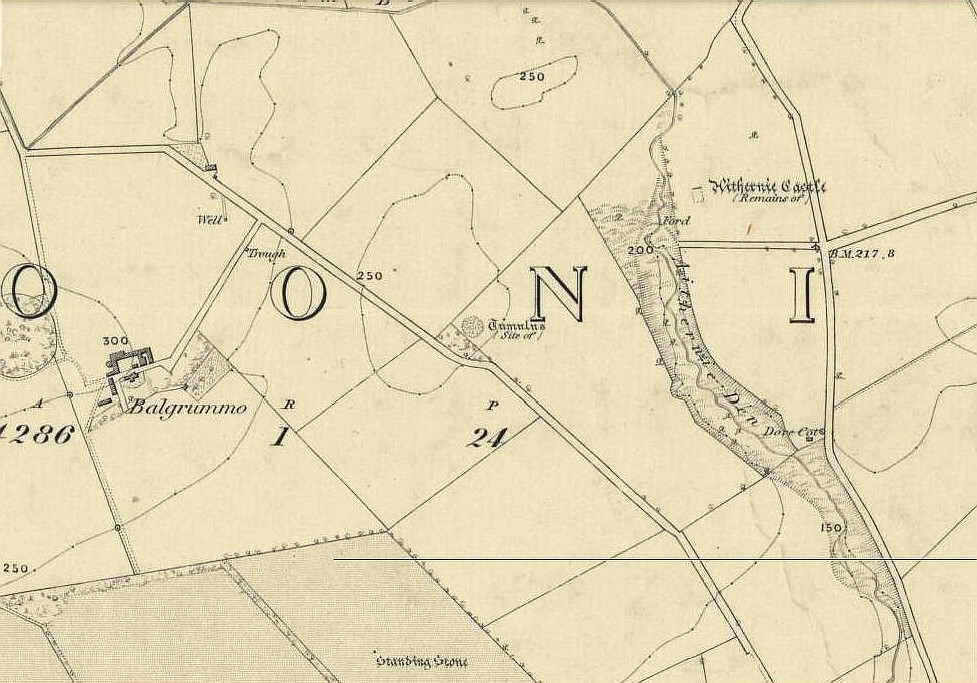Tumulus (destroyed): Grid Reference – NO 3769 0339
Also Known as:
Archaeology & History

A mile or so WNW of the fantastic standing stones of Lundin, and just a coupla hundred yards above where the lesser standing stone of Balgrummo lives, we could once see an impressive prehistoric burial mound on the small hilltop of Aithernie. Sadly, like oh too many prehistoric sites in our landscape, it was vandalised and destroyed in the 19th century by the prevailing stupidity of the period. Thankfully we have a couple of accounts describing the place.
The site had already passed into memory when the Ordnance Survey fellas got up here in 1854, but an account of it was made in the ‘Object Name Book’ of the parish a decade earlier. Thankfully the story of the site was known locally and, along with the New Statistical Account describing the olde mound, A.S. Cunningham (1906) told the story of when it was “opened” and then of its subsequent demise. He wrote how,
“…in 1821 a much more interesting relic of antiquity…was opened in a field on the estate of Aithernie. When digging moulding sand for Leven Foundry, the workmen struck right into the heart of an ancient tumulus. This cemetery of prehistoric times contained as many as twenty rude stone cists. These cists were typical of the prehistoric burial places found throughout the country. They were constructed of slabs placed on edge, with a covering stone, and cemented with clay puddling. Above the coffins was a covering of stones, the stones having hundreds of years before been so firmly cemented together with clay and sand that the workmen required the aid of picks to enable them to “rifle the tombs.” Small urns were found in two of the coffins, and five of them contained larger urns, 14 inches in diameter and 24 inches in depth, and in another cist quantities of charred wood beads were discovered. All the coffins, except the five in which were the large urns, contained human bones, and innumerable bones were found outwith the mouths of the cists.”
When the Royal Commission (1933) lads visited the place in 1925, they reported “no existing indication of a tumulus” remained. Gone!
References:
- Cunningham, A.S., Rambles in the Parishes of Scoonie and Wemyss, Purves & Cuningham: Leven 1906.
- Royal Commission on the Ancient & Historical Monuments, Scotland, Inventory of Monuments and Constructions in the Counties of Fife, Kinross and Clackmannan, HMSO: Edinburgh 1933.
© Paul Bennett, The Northern Antiquarian
The map could not be loaded. Please contact the site owner.